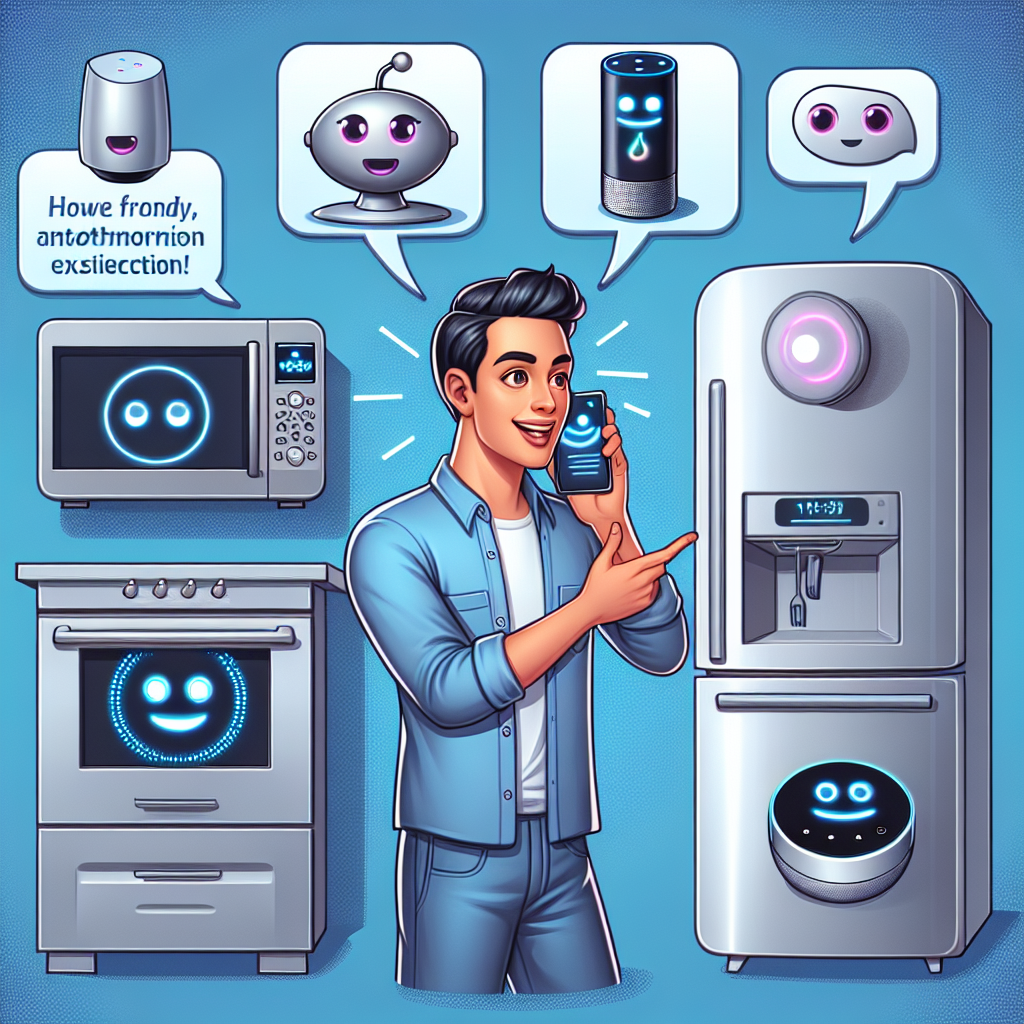In today’s fast-paced digital landscape, content creation has undergone a remarkable transformation, thanks to the emergence of generative AI technology. This revolutionary advancement is reshaping how businesses approach content development within the Software-as-a-Service (SaaS) industry. Generative AI refers to artificial intelligence models that can autonomously create original content—whether it’s text, images, code, or even video—by learning patterns from vast datasets and generating new outputs based on user input or system context.
For entrepreneurs, small businesses, and developers alike, this technology offers a game-changing approach to content creation that was previously unimaginable. Rather than spending hours crafting marketing copy, designing graphics, or writing code, generative AI enables seamless and efficient production across various media formats. The capabilities extend far beyond simple automation; these sophisticated AI systems can understand context, maintain brand voice, and produce creative content that resonates with specific audiences.
As we explore the transformative impact of generative AI on content creation, we’ll discover how this technology is not just saving time and resources but fundamentally changing how businesses operate in the digital space. From customizable content that speaks directly to individual customers to innovative pricing models that reflect real value, generative AI is truly revolutionizing the SaaS landscape without requiring users to break a sweat.
Tailored to Perfection: Adaptability and Customization
One of the most powerful aspects of generative AI within an AI SaaS Creation Platform is its remarkable adaptability. Unlike traditional content creation tools that offer limited customization options, generative AI solutions can be tailored to specific user needs, brand guidelines, and target audiences with unprecedented precision.
For individual entrepreneurs and small businesses, this customization capability is particularly valuable. These AI tools can learn your brand voice, understand your unique selling propositions, and consistently generate content that aligns with your business identity. Whether you’re crafting email campaigns, social media posts, or product descriptions, customizable AI digital workers can adapt their outputs to match exactly what you need.
“The ability to customize AI-generated content has completely transformed our marketing approach,” shares Emma Chen, founder of a boutique e-commerce store. “We can now create personalized product descriptions for hundreds of items in a fraction of the time it used to take, and each description feels uniquely crafted for our audience.”
This level of personalization extends beyond just text. Advanced generative AI tools can create customized images, videos, and interactive content that speak directly to specific customer segments. For example, an AI tool might generate different versions of marketing materials based on geographic location, customer behavior, or previous purchase history—all without requiring extensive manual intervention.
The importance of personalized content in enhancing customer engagement cannot be overstated. According to recent marketing studies, personalized content generates up to 40% higher conversion rates compared to generic messaging. With customizable AI digital workers, even the smallest businesses can now deliver highly personalized experiences that were once only possible for large corporations with substantial resources.
Furthermore, these user-friendly AI tools allow for real-time adjustments and refinements. As market conditions change or customer preferences evolve, the AI can quickly adapt its outputs to reflect these shifts, ensuring that your content remains relevant and effective. This adaptability represents a significant competitive advantage for businesses looking to stay agile in rapidly changing markets.
Efficiency Unleashed: Faster Production Without Compromising Quality
Perhaps the most immediate benefit of integrating generative AI into content creation workflows is the dramatic increase in efficiency. What once took hours or even days to produce can now be generated in minutes or seconds, allowing businesses to significantly accelerate their content production timelines.
For startups and small businesses operating with limited resources, this efficiency boost is transformative. With AI-powered workflow automation, teams can produce more content with fewer resources, enabling them to compete with larger companies that have traditionally held an advantage in content volume and frequency.
The efficiency gains aren’t limited to just speed, however. By automating routine and repetitive content creation tasks, generative AI frees up human creativity for more strategic, high-value activities. Content creators can focus on refining strategy, developing unique campaign ideas, and making the creative decisions that truly differentiate a brand, while leaving the execution details to AI tools.
“We’ve reduced our content production time by 75% since implementing generative AI tools,” reports Marcus Johnson, marketing director at a SaaS startup. “But more importantly, the quality hasn’t suffered—in fact, it’s improved because our team can now focus on strategy rather than getting bogged down in production details.”
This efficiency translates directly into cost savings. By leveraging AI Agent Technology, businesses can produce more content without proportionally increasing their workforce or outsourcing expenses. The scalability is particularly valuable for growing businesses—as content needs expand, AI systems can simply handle larger volumes without the traditional staffing constraints.
Statistical evidence supports these efficiency claims. A recent industry survey found that companies using generative AI for content creation reported an average productivity increase of 67% and cost reductions of 53% compared to traditional methods. For small businesses operating with tight margins, these improvements can make the difference between struggling and thriving.
The quality of AI-generated content has also reached impressive levels. Modern generative AI systems produce outputs that are increasingly indistinguishable from human-created content, especially when fine-tuned to specific domains and properly guided. This means businesses no longer face a trade-off between speed and quality—they can have both simultaneously.
Value-Based Pricing: A New Era for SaaS Economics
The integration of generative AI into SaaS platforms is driving a fundamental shift in how these services are priced and monetized. Traditional seat-based pricing models, which charge based on the number of users, are becoming increasingly outdated as AI changes the value equation.
Instead, forward-thinking SaaS companies are adopting outcome-driven or value-based pricing approaches that better reflect the actual business impact their AI-powered solutions deliver. This shift makes particular sense for generative AI applications, where the value lies not in how many people use the tool but in what the tool helps them accomplish.
For developers and technical professionals building on AI SaaS Creation Platforms, this pricing evolution creates new opportunities to align revenue models with customer success. Rather than charging for access, they can charge for specific outputs, achievements, or business results—a model that resonates strongly with customers who want to pay for actual value received.
“We moved from a standard per-user pricing model to charging based on the volume and type of content generated,” explains Jordan Wei, founder of an AI-powered marketing platform. “Our customers love it because they only pay for what they actually use, and we can capture more value from power users who get tremendous ROI from our platform.”
This approach creates a win-win scenario: customers pay based on the actual value they receive, while SaaS providers can capture a fair share of the value they create. For example, an AI content platform might charge based on the number of blog posts generated, qualified leads produced, or even revenue attributed to AI-created marketing materials.
Market data supports this transition. According to venture capital firm Andreessen Horowitz, AI-native companies are increasingly adopting usage-based, outcome-based, or hybrid pricing models that better align with how their technology creates value. This shift is expected to accelerate as generative AI becomes more central to SaaS offerings.
For small businesses and startups using these platforms, the value-based approach often results in more predictable and justifiable expenses. Rather than committing to fixed subscription costs regardless of results, they can directly tie their AI investments to business outcomes, making it easier to calculate ROI and justify technology spending.
Collaborative Intelligence: Enhancing Human Creativity
One of the most powerful aspects of generative AI tools is their ability to function as collaborative partners rather than mere automation tools. This intelligent collaboration creates new possibilities for enhancing human creativity and productivity.
By handling routine tasks and generating initial drafts or concepts, AI tools free up human team members to focus on refinement, curation, and strategic decision-making. This division of labor plays to the strengths of both artificial and human intelligence: AI excels at processing vast amounts of data and generating options, while humans excel at judgment, emotional intelligence, and contextual understanding.
Low-code platforms that incorporate generative AI are particularly valuable in this context. These user-friendly AI tools empower non-technical users to manage content workflows efficiently, breaking down traditional barriers between technical and creative teams. Marketing specialists, content creators, and business stakeholders can directly interact with AI systems without requiring developer intervention for every task.
“Our design team uses generative AI to quickly create multiple concepts for client presentations,” shares Aisha Rodriguez, creative director at a digital agency. “What used to take days now takes hours, and the designers spend their time refining and perfecting concepts rather than starting from scratch each time. It’s completely transformed our creative process.”
Workflow automation powered by generative AI creates significant productivity gains. Repetitive tasks like formatting content for different platforms, generating variations of marketing messages, or creating localized versions of core content can be handled automatically. These automations eliminate bottlenecks and allow teams to maintain consistent output even during peak demand periods.
The collaborative potential extends to cross-functional teams as well. With generative AI tools serving as a common interface, marketing teams can quickly generate content, product teams can create documentation, and sales teams can customize proposals—all drawing from the same AI capabilities but tailored to their specific needs.
Market Opportunities: Sharing and Selling AI-Generated Products
The democratization of content creation through generative AI has opened up entirely new market opportunities for entrepreneurs and businesses of all sizes. The ability to rapidly create high-quality digital assets has transformed not just how businesses operate internally, but also what they can offer to the market.
For individual creators and small businesses, customizable AI digital workers enable the production of digital products at scale. Whether it’s e-books, design templates, custom illustrations, or specialized content collections, generative AI makes it possible to create valuable digital assets with minimal upfront investment.
“I’ve built a thriving side business selling AI-generated design templates,” explains Carlos Mendez, a graphic designer. “I spend time fine-tuning the prompts and ensuring quality, but the AI handles the heavy lifting of creating hundreds of variations. It’s opened up a revenue stream I never could have managed on my own.”
AI SaaS Creation Platforms that facilitate sharing and selling of AI products are creating vibrant marketplaces where creators can monetize their expertise in guiding AI systems. Rather than selling just their time, professionals can package their knowledge into AI workflows that generate ongoing revenue through licensing or subscription models.
This opportunity extends to vertical-specific applications as well. Industry experts can develop specialized AI tools that address the unique content needs of particular sectors—legal document generation, technical documentation, specialized marketing content for regulated industries, and much more.
The market for AI-generated content is expanding rapidly. According to industry forecasts, the global market for AI-generated content is expected to reach $20 billion by 2025, representing a massive opportunity for innovators who can harness these tools effectively.
For developers and technical professionals, low-code AI platforms offer the ability to quickly prototype and deploy specialized AI applications without building everything from scratch. This accelerates innovation and allows for rapid testing of new concepts in the market.
Embracing the Future with Zygote.AI
As we’ve explored throughout this article, generative AI is fundamentally transforming content creation within the SaaS industry. From enhanced efficiency and customization to new pricing models and market opportunities, the impact is far-reaching and profound.
At Zygote.AI, this transformation aligns perfectly with our core philosophy: making AI accessible to everyone and empowering individuals and teams to turn their ideas into reality without requiring specialized technical skills. Our AI SaaS Creation Platform embodies this vision by providing user-friendly tools that democratize access to cutting-edge AI capabilities.
We believe that content creation should be accessible to all, regardless of technical background or resources. Through our low-code platform approach, we’re enabling entrepreneurs, small businesses, and developers to harness the power of generative AI for their specific needs. Whether you’re looking to streamline your marketing content production, create personalized customer communications, or build entirely new AI-powered products, our customizable AI digital workers provide the flexibility and power you need.
The future of work is being reshaped by these technologies, with routine tasks increasingly automated and human creativity amplified through intelligent collaboration. At Zygote.AI, we’re committed to helping our users navigate this transformation and unlock their full potential in this new landscape.
Our vision extends beyond just providing tools—we’re building an ecosystem where innovation thrives through sharing and collaboration. By creating platforms where users can share and sell their AI-generated products and workflows, we’re fostering a community of creators who continually push the boundaries of what’s possible.
The revolution in content creation enabled by generative AI is just beginning. As these technologies continue to evolve and mature, we’ll see even more impressive capabilities and applications emerge. By embracing these tools now and incorporating them into your workflows, you position yourself at the forefront of this transformative wave—creating content at scale, personalizing experiences for your audience, and discovering new opportunities for growth and innovation.
All of this, remarkably, without breaking a sweat. The future of content creation isn’t about working harder—it’s about working smarter with AI as your partner.









